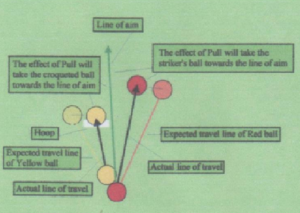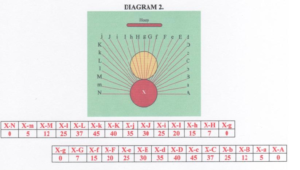By Cliff Jones - Issue 27 (2009)
- The break should never be sacrificed for the sake of peels.
- Peeling requires good control of rushing, hoop approaches and hoop running.
- Make allowances for pull where a peel is attempted in a split shot
Types of Peel
|
Straight |
The peel is completed immediately before making the same hoop with the striker’s ball. |
|
After Hoop |
The peel is completed immediately after making the same hoop but in the opposite direction. Examples of this would be peeling penultimate after running hoop 6 or peeling rover after running hoop 5. |
|
Going to another Hoop |
The peel is completed using a split croquet stroke with the striker’s ball going to the pioneer for its next hoop. Examples of this would be peeling rover going to a 2-back pioneer or again peeling rover but going to a 3-back pioneer. |
|
Rush Peel |
The peel is completed by rushing the peelee through its hoop. This is usually only successful if the peelee is either in the jaws of the hoop or very close and directly in front of the hoop. |
|
Irish Peel |
The peel is completed in the same stroke when running the same hoop with the striker’s ball. |
|
Promotional Peel |
The peel is completed by a croqueted or rushed ball causing the peelee to be peeled. |
Pull.
Peeling a ball using a roll shot will produce ‘pull’ on the croqueted ball (peelee) and the striker’s ball in the direction of the aiming line. Using a stop shot would produce less pull.

Diagram 1 illustrates the effect of pull when playing a roll shot in an attempt to peel a ball through a hoop.
The Peeling Wheel

The Peeling Wheel (Diagram 2) together with the associated chart is a ‘guide only’ to the amount of pull when a small split shot is played in the directions shown (X-A, X-M etc). The directional lines represent the Line of Aim (swing line of mallet). The amount of pull is shown as a figure 0-45, the least pull being 0 and the most pull being 45.
The assessments of the varying amount of pull shown in the charts are from experimentation and observation of different players and playing styles.
The weight of the mallet may also change the amount of pull on either or both balls. A stop shot would reduce the amount.
Anti-Pull. It is impossible for the balls to have a reverse pull effect if a roll shot is played hard, say peeling at penult and sending the striker’s ball to a pioneer at or past 2-back.

